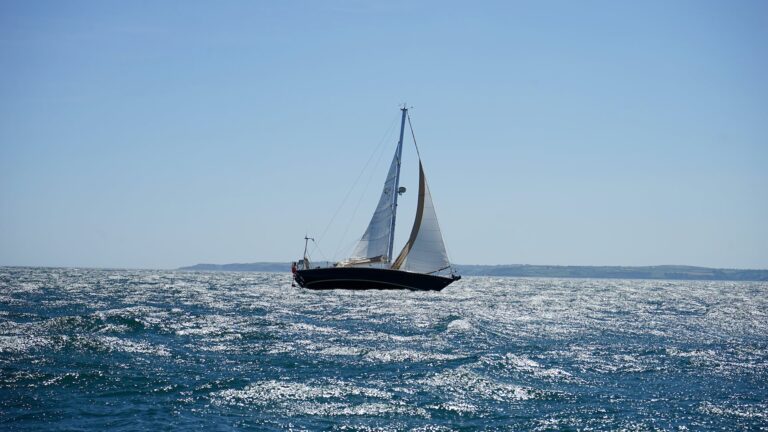Are Waves Bigger On Windy Days?
Introduction
As a sailing expert, I’m often asked the question: “Are waves bigger on windy days?”. In this article, I will explain what waves are, how they form, and how the speed of the wind affects wave size so that you can get an understanding of what to expect when sailing in different conditions.
I will also provide examples to illustrate the relationship between wind speed and wave size as well as summarise the key points discussed so that you can be better prepared for your next sailing adventure!
What Are Waves?
Before we can address whether waves are bigger on windy days or not, it is important to understand what a wave is. A wave is a disturbance that moves through a body of water, typically caused by wind or gravity from an object such as an iceberg or a boat motor.
Waves transfer energy from one point to another without transferring any matter and come in various shapes and sizes depending on the conditions in which they form. In sailing, waves play an important role as they can cause boats to move up and down or side-to-side depending on their size and direction of travel.
How Waves Form
Waves form when energy is transferred from one point to another through a body of water, either by wind or gravity from objects such as icebergs or boat motors. When this energy transfer occurs, it causes disturbances in the water which creates ripples which then grow into larger waves over time due to constructive interference (when two or more waves combine together).
As these disturbances travel through the water, they become bigger and more powerful until they reach shore where they break into surfable waves depending on their size, frequency and direction of travel.
The Role of Wind in Wave Formation
Wind plays an important role in wave formation as it provides energy that helps create waves over large bodies of water such as oceans and lakes.
When wind blows across the smooth water surface, the friction or drag between the air and the water tends to stretch the surface creating ripples which then grow into larger waves over time due to constructive interference (when two or more waves combine together).
This is why you often see larger waves out at sea than you do near shorelines – because there is more time for them to build up before reaching shore due to being further away from land masses that can disrupt their patterning/directional travel.
The Effect Of Wind Speed On Wave Size
The speed at which wind blows across a body of water has an effect on how large waves become – faster winds create larger waves while slower winds create smaller ones, this is because faster winds create more friction (drag) between the air and water which causes more stretching/ripples that eventually turn into larger waves over time due to constructive interference (when two or more waves combine together).
Additionally, stronger winds tend to push against each other creating larger swells that further increase wave size over time – this is why you often see large swells out at sea compared to near shorelines where there tends to be smaller but steadier waves due to calmer winds near land masses disrupting their patterning/directional travel.
Factors That Influence Wave Size
In addition to wind speed, there are several other factors that influence wave size including depth/shape/slope of ocean floor (the steeper/deeper it is, the bigger/more powerful the wave), type/size/frequency of swell (large swells tend to be more powerful than small ones), tidal cycles (tides affect how far out into deeper ocean waters swells can travel), temperature variations (cooler waters produce bigger swells than warmer waters), etc… All these factors have an effect on how big a given wave will be so it’s important for sailors to keep them in mind when planning their journeys!
Examples Of Different Types of Waves and Wind Speed
To better understand how wind speed affects wave size let’s look at some examples: A light breeze blowing across shallow waters produces smaller but steadier ripples while stronger gusts create stronger swells with more power behind them, similarly, deeper waters with steeper slopes allow for larger swells with greater power due to being able to sustain them over longer distances than shallower waters would otherwise allow for, lastly, different types of swell also affect wave size – large swells tend to be much bigger than smaller ones due to having more energy behind them which is why you often see very large standing surfable waves out at sea compared with near shorelines where there tends to be smaller but steadier ripples instead due their closer proximity disrupting swell patterning/directional travel!
The Relationship Between Wind Speed and Wave Size
From our examples above we can see that there is definitely a relationship between wind speed and wave size – faster winds produce larger waves while slower winds produce smaller ones, additionally, deeper waters with steeper slopes allow for larger swells with greater power due being able to sustain them over longer distances than shallower waters would otherwise allow for, lastly, different types of swell also affect wave size – large swells tend be much bigger than smaller ones due having more energy behind them which why you often see very large standing surfable waves out sea compared with near shorelines where there tends be smaller but steadier ripples instead due their closer proximity disrupting swell patterning/directional travel!
Summary Of The Relationship Between Wind Speed And Wave Size
In summary: Faster winds produce larger waves while slower winds produce smaller ones, deeper waters with steeper slopes allow for larger swells with greater power, different types of swell also affect wave size – large swells tend be much bigger than smaller ones due having more energy behind them, lastly, near shorelines tend have smaller but steadier rides instead due their closer proximity disrupting swell patterning/directional travel!
Conclusions On Are Waves Bigger On Windy Days?
In conclusion: Yes – generally speaking waves are bigger on windy days since faster winds create more friction(drag) between air and water causing more stretching/ripples that eventually turn into larger waves over time due constructive interference (when two or more waves combine together), additionally stronger winds tend push against each other creating even larger swells that further increase wave size!
It’s important though keep mind all other factors mentioned above such depth/shape ocean floor as well type/size swell etc…as these too have an effect how big given wave will be so best plan accordingly next sailing adventure!





![sailing-rerig-sailboat-cost-boat How Much Does It Cost To Rerig a Sailboat?[Editing Required]](https://challengedamerica.org/wp-content/uploads/2023/02/sailing-rerig-sailboat-cost-boat-768x432.jpg)

